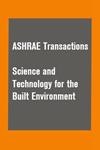人工光环境下心理反应与睡眠活动的关系
IF 1.7
4区 工程技术
Q3 CONSTRUCTION & BUILDING TECHNOLOGY
Science and Technology for the Built Environment
Pub Date : 2023-05-09
DOI:10.1080/23744731.2023.2210976
引用次数: 0
摘要
光有助于人类同步昼夜节律,这就需要在卧室里创造一个明亮的环境。许多研究都集中在卧室照明调节对睡眠的影响上。然而,对于心理反应与住宅卧室睡眠之间的关系,缺乏研究。因此,这项基于室内的研究探讨了三种相关色温之间的情绪差异(CCT;2700 K、 4100 K、 5500 K) 。此外,该研究还分析了睡眠前后心理状态与睡眠质量的相关性。结果表明,在不同的睡眠条件下,在卧室前后放置合适的人工灯(2700K时的CCT)可以为受试者提供放松。此外,SOL、SWS和SE在不同CCTs之间存在显著差异。根据相关和回归分析,有四组Pearson显著相关变量,决定系数在0.34至0.70之间。其中,67%的SOL变化可以用睡前放松和愉悦的程度来解释。此外,充足而健康的睡眠可能会使人造光产生的情绪永久化。最后,在卧室创造舒适的照明条件时,应考虑心理状态和睡眠生理反应的作用。本文章由计算机程序翻译,如有差异,请以英文原文为准。
Associations between psychological responses under artificial light environment and sleep activity
Light helps mankind synchronize the circadian rhythm, necessitating the need to create a luminous environment in a bedroom. Many studies have focused on the effect of bedroom lighting regulation on sleep. However, there was a lack of research on how psychology responses are connected to sleep in residential bedroom. Thus, this chamber-based study explored mood differences among three correlated color temperatures (CCT; 2700 K, 4100 K, 5500 K). Additionally, the study analyzed the correlation of pre- and post-sleep psychological states with sleep quality. The results showed that suitable artificial lights (CCT at 2700K) in a bedroom before and after sleep under different conditions would provide the relaxation for subjects. Moreover, SOL, SWS, and SE were significantly different across different CCTs. According to the correlation and regression analysis, there were four groups of Pearson significantly correlated variables with coefficients of determination ranging from 0.34 to 0.70. Among them, 67% of the variation in SOL could be explained by the degree of pre sleep relaxation and pleasure. Furthermore, abundant and healthy sleep might perpetuate the mood generated by artificial lights. Finally, the roles of psychological states and sleep physiological responses should be considered while creating comfortable lighting conditions in bedrooms.
求助全文
通过发布文献求助,成功后即可免费获取论文全文。
去求助
来源期刊

Science and Technology for the Built Environment
THERMODYNAMICSCONSTRUCTION & BUILDING TECH-CONSTRUCTION & BUILDING TECHNOLOGY
CiteScore
4.30
自引率
5.30%
发文量
78
期刊介绍:
Science and Technology for the Built Environment (formerly HVAC&R Research) is ASHRAE’s archival research publication, offering comprehensive reporting of original research in science and technology related to the stationary and mobile built environment, including indoor environmental quality, thermodynamic and energy system dynamics, materials properties, refrigerants, renewable and traditional energy systems and related processes and concepts, integrated built environmental system design approaches and tools, simulation approaches and algorithms, building enclosure assemblies, and systems for minimizing and regulating space heating and cooling modes. The journal features review articles that critically assess existing literature and point out future research directions.
 求助内容:
求助内容: 应助结果提醒方式:
应助结果提醒方式:


